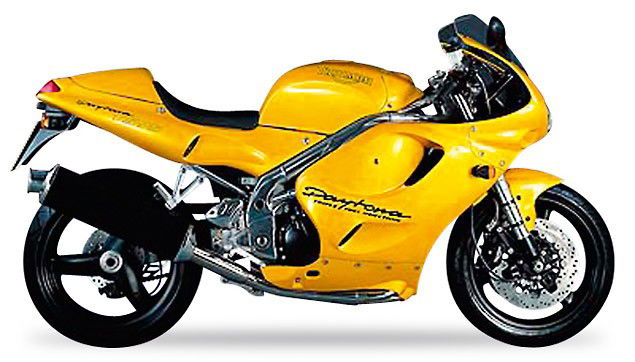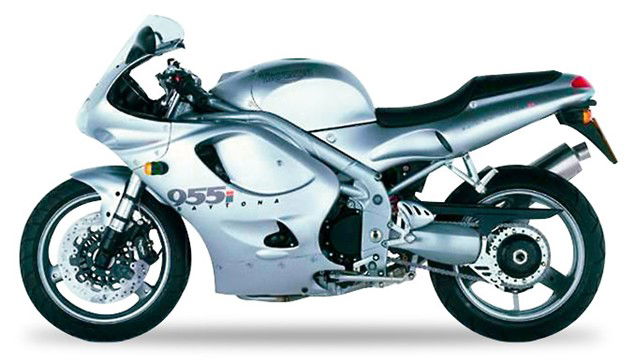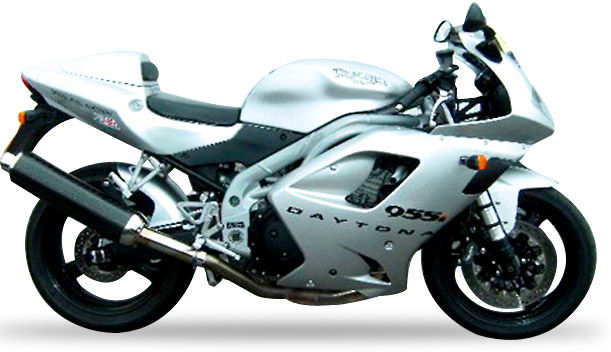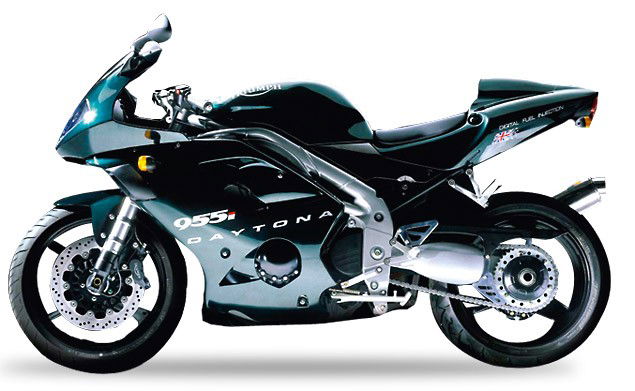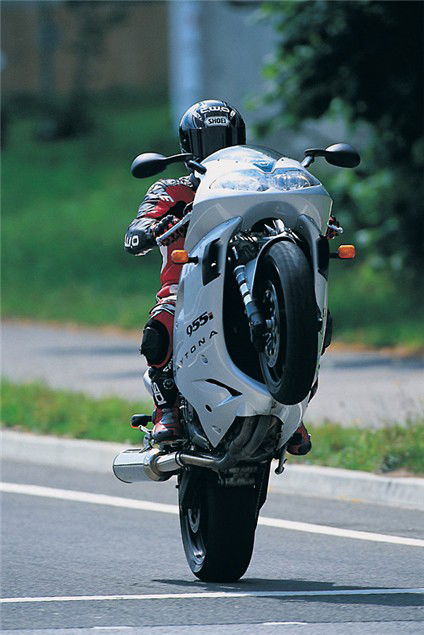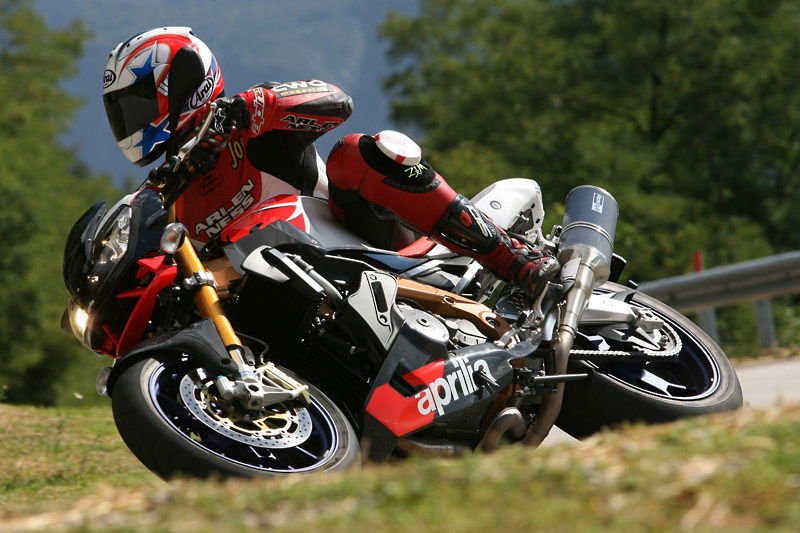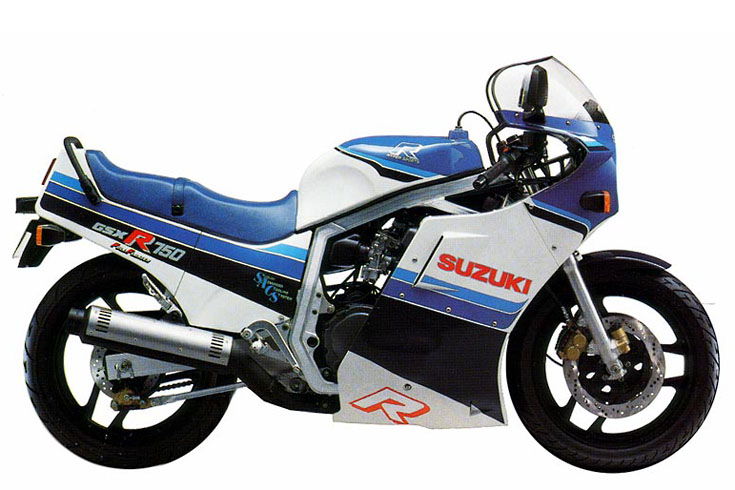Buyer Guide: Triumph T595 & 955i Daytona
All the nitty gritty on Triumph’s only big sports bike from people who actually own the bike...

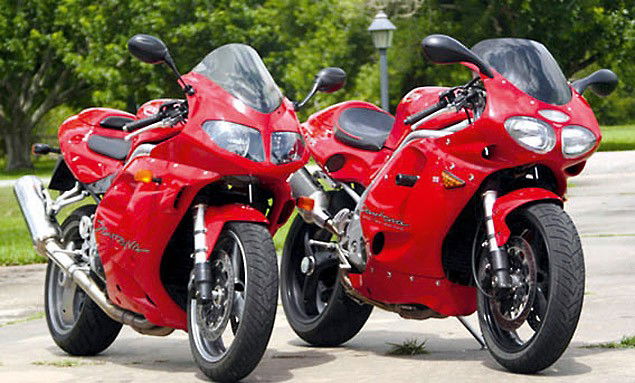
Click to view: Triumph T595 & 955i Daytona owners reviews, specs and image galleries.
Also ran. Close but no cigar. Pretender to the throne. Harsh terms to label a bike with but you could say all of them applied to Triumph’s attempt to build a litre class sports bike. Judge the bike by its lap times and you’d have to agree; the T595 and later 955i Daytonas models never matched the Japanese competition.
But the big Triumph does have two real aces. The first is personality. And that counts for an awful lot, much more to most of us than shaving fractions of seconds off lap times. And this brawny Brit’s loaded with it. In the Daytona’s case much of it comes from the Triumph three cylinder engine’s rough charm. The second ace is it’s a bike which works better on real roads than it does on a racetrack. It’s slightly more stable and easy to use than the Japanese competition.
There’s more. Most people find it comfier than sports bikes, especially in its second incarnation from mid 2001 onwards. It’s a bike made with the British weather in mind too. That means even older examples polish up well while some rivals can look quite tatty after a few years use.
Owners point out that these advantages more than outweigh the fact the big Daytona’s behind the competition in terms of track lap times, especially as most riders don’t have the skills to exploit rival bikes’ extra ability anyway.
The Daytona’s got one final ace: price. It’s much cheaper than bikes like the R1 or Fireblade on the used market and that counts for a lot.
51 owners took the time to fill in our on-line survey. 30 owned the pre-2001 bike and 21 the significantly updated 2001 onwards machine. They’ve covered about half a million miles on these machines so forget the internet rumours and assorted bullshit and believe what you read here. If you want to know about the 955 Triumph, here’s the place.
Triumph Daytona Specifications
1997 Triumph Daytona T595 Specs
Engine 12v, injected, triple Power 129bhp Torque 66ftlb Dry weight 193kg Seat Height 800mm Fuel capacity 18 litres Top speed 160mph
1998 Triumph Daytona 955i Specs
Engine 12v, injected, triple Power 129bhp Torque 74ftlb Dry weight 192kg Seat Height 800mm Fuel capacity 18 litres Top speed 160mph
2001 Triumph Daytona 955i Specs
Engine 12v, injected triple Power 147bhp Torque 74ftlb Dry weight 188kg Seat Height 815mm Fuel capacity 21 litres Top speed 165mph
The nuts & bolts
Reliability
Of the older (pre-2001 facelift) bikes, 47% reported no issues, 30% had suffered one problem, 20% had a few problems and 3% had loads. The newer bikes were slightly worse with 33% reporting no problems, 43% having one, 19% suffering a few and 5% being plagued with loads. Overall that’s not brilliant and certainly worse than the Aprilia Tuono and Ducati 749/999s we surveyed recently. Many of the problems may be due to age making comparisons with the Tuono and Ducatis a little unfair, but don’t expect trouble free ownership.
So what does go wrong? Owners reported over 30 specific faults but there didn’t seem to be any obvious recurring nightmares. Four had issues with the speedo / clocks, three found their bike heavy on batteries, three had overheating problems and two had the chain adjusters seize on single sided swing arm models. The rest all seemed unrelated.
Most were pretty minor but one owner had fourth gear give up on his 1997 T595, allegedly a not uncommon problem and was unlucky enough to also suffer a water jacket split and an alternator gear which self destructed. Another had the starter clutch sprag cause grief on a 2001 bike – a known weakness on older Triumphs but we thought it’d been fixed by the turn of the century.
Owners also listed things they’d check if they were buying another T595 or 955i second hand. These included: 4th gear on the way out, cams wearing (hard to detect unfortunately), the rear linkage for signs of lubrication / seizure, clutch slip, warped discs, service history plus all the regular things you’d look for on any used bike.
Considering these bikes’ age those aren’t disastrous results but they’re not brilliant either. If you can’t risk a breakdown, something like a Blackbird or even a 1200 Bandit will be a better bet. If you do fancy owning a portion of British beef, a good owners website will help you pre-empt any of the bike’s foibles. www.triumphtorque.com is a superb resource for all Triumph owners.
While reliability may not be flawless the finish, on the other hand, is excellent with many owners commenting on just how impressed they’ve been. Some of these bikes were made quite a while ago when less environmentally friendly paints and finishes were used and they’re more durable as a result. Complains were very, very few but two owners said mirrors on their early bikes split and another two said paint on the engine cases bubbled. On the later bike the engine finish also comes under fire but this time it’s corroding.
Owner Case Study: “...I’ve done over 30,000 miles in ten years on mine...”
Gus Galbraith bought a T595 in 1999 and has taken the mileage from about 5,000 to nearly 40,000
“It handles so well on the road. I know some guys with R1s and the like and they can feel on the edge. The T595’s never like that. I’ve just done 800 miles on it in the Scottish Highlands over the last four days and it’s superb. I’ve owned many Japanese bikes but never kept any of them more than two years. I’ve had this bike 10 years and will never willingly sell it.
“It’s never gone wrong and let me down although it has had recalls to prevent known problems. I’ve also modified it a bit such as a direct gear linkage from the later 955 model, a kit so it takes a maintenance free battery, an uprated spring on the shock and K Tech springs in the forks.
“When I’d bought it, the shop was prepping it and the engine blew up. Some internal part came off and jammed the oil pump which destroyed the whole lump. They stripped it but it was cheaper to fit a good used engine, so that’s what they did. It’s been fine and I’ve never heard of another have that problem so it must have been an isolated incident. Sprag clutches go on early models but they fixed that pretty soon.”
Running costs
Fuel consumption’s pretty good for a large, sporty bike. Earlier bikes average 41mpg while later ones achieve 46mpg. You can expect 5-10mpg more than either of those on a steady run too. Servicing is due every 6,000 miles on all bikes. Owners say they pay quite high prices, especially if they get the work done at official Triumph dealers.
The minor (6,000 mile) service includes oil and filter change, check spark plugs, balance injectors plus other minor tasks. Average price paid was £157.
The major (12,000 mile) service is much more involved and includes valve clearance checks, new plugs, new coolant, new air filter, new brake fluid, lubricating the headstock bearings and more. Average price paid was £407. Plenty came to over £500 although some kept it to £300 or below, often by using independent mechanics.
Tyres and pads
Both versions take the common 120/70-17 front tyre. Early models had a 190/50-17 rear while the later ones got a slimmer 180/55-17 which helps the bike turn faster. Either rear works on either model but the 180 gives a sportier feel.
The favourite tyres in our survey were Bridgestone’s latest sports touring rubber – the BT-021. Next were Michelin’s similar and also very well regarded Pilot Road 2. Three tyres shared third spot: Pirelli’s evergreen and sporty Diablo, and two outdated choices, Bridgestone’s BT-010 and Avon’s Azaro. We’d avoid those last two unless they were cheap as they’re very much yesterday’s news. Sports touring tyres tended to be the most popular but some riders went for sporty tyres or even racy track day rubber like Metzeler Rennsports and Michelin Pilot Power Race. We’d stick to the sports touring options unless you’re doing a lot of track days.
Average front tyre life was 5,393 miles with a maximum of 11,000 and a minimum of 2,000. Rears typically managed 5,020 miles, minimum 1,500, maximum 7,000. That’s good tyre life considering it’s a fast, torquey bike.
The most popular brake pads are EBC and most owners say they’re excellent, especially the HH versions. Scott Lindsay points out they’re noisier than the original pads which are the second most popular in the survey. Those two alone account for over 90% of brake pads mentioned and the only others worthy of note are Paul Messenger’s Beringers in his six-pot calipers. His 1996 T595 is dripping with goodies including Dymags, Ohlins, Special Brew paint job, Titanium bits, Clive Wood tuned motor from the Powerbike race series. For some time it was fastest Triumph around the Isle of Man TT circuit...
Your Reviews
We have the all of Triumph's big sports bike loaded in to our owner reviews section, click on either the T595, 955i and 955Fi to submit your review and opinions.
Owner Case Study: “...I’ve owned three of them...”
Justin W. Brown says he’ll take Triumph road handling over Japanese power any day...
"My first one was a 1997 T595 which I bought second hand in about 2003. It had 12,000 miles on the clock so it’d already had the expensive major service done. I used it for all sorts, including track days which it coped with well. The mileage was creeping up and I wanted to sell it before the 24,000 mile service. I bought another, newer T595 and swopped one component over at a time until I identified the problem. It was one of the relays at the back under the seat so I replaced it.
“The mileage started growing on that second bike so I sold that too. I really like the original shape bike so bought the latest model with it which was one of the early 955is. The T595 had a pleasing rawness to it which I do miss on the 955i. They’re great bikes and tick a lot of boxes. A lot of people think Triumph should make a newer large capacity sports bike and they’re probably right. But I love the classic looks of my 955i.
“I’ve still got the 955i and it’s done 22,000 miles. I take it on track days quite a bit. The R1s and GSX-Rs come past on the straight but it holds its own in the corners. I have uprated the suspension which helps.”
